Chicago Cubs: Re-grading the fateful 2021 trade deadline

The 2021 trade deadline marked a pivotal moment for the Cubs as a franchise, and almost a year later, we have a clearer picture of how the trades look.
Almost a year ago, Jed Hoyer pulled the trigger on a series of franchise-altering moves, stripping the Chicago Cubs of the core that broke a 108-year World Series curse, trading Anthony Rizzo, Javier Baez, and Kris Bryant among others away at the trade deadline.
After several seasons of underperformance, and the Cubs and the core players not coming to an agreement on extensions, Hoyer steered the team into retooling/rebuilding mode, making eight trades and acquiring 12 new players during the month of July. It was an emotionally-charged time, with many understandably angered and distraught over the loss of so many beloved players.
Now, with almost a year in the rearview mirror, emotions have cooled a bit, and with a greater deal of familiarity with the players Chicago received in return, we can now give a better grade to the trades that Hoyer made. The 2021 deadline could very well define the next era of baseball on the North Side – so how do those moves look at this point?
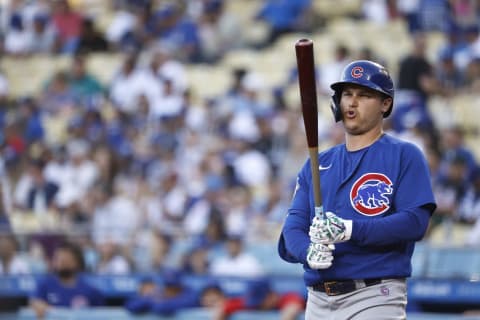
Joc Pederson trade seems like a win for the Cubs and the Braves alike
The first trade Hoyer made was to offload Joc Pederson, who had an up-and-down stint in Chicago. The Cubs were able to net first baseman Bryce Ball in the deal. Ball had an intriguing blend of power and on-base ability, which made him a decent return for a rental outfielder. The hangup with Ball is that he was marred by inconsistency and a very high strikeout rate. He began to flash toward the end of the 2021 season, but still had a good amount of work to do.
Meanwhile, Pederson became the heart and soul of a Braves team that caught fire down the stretch and made a miracle run to a world series title. For that reason alone, it’s impossible to categorize the trade as a loss for Atlanta. However, Ball’s hot start this year is certainly noteworthy, as well.
The Cubs decided to elevate Ball to Double-A Tennessee to start the year and he has been one of the biggest breakouts in a flourishing Cubs system. Ball, as of May 24, carried a slash line of .315/.389/.524 with six home runs. The big improvement in Ball’s approach is the heavily reduced strikeout rate as he’s struck out on 19 percent of his plate appearances as opposed to a ghastly 27.5 percent strikeout rate in 2021.
While the Braves will never wind up regretting this trade, the Cubs may very well be very happy with the outcome of this one as well.
- Original Grade: B
- New Grade: A
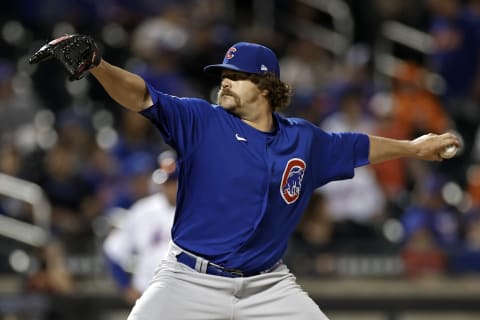
Cubs got a strong return in the Andrew Chafin trade, but there are questions
The first of the big three relievers to go at the deadline for the Cubs, Hoyer flipped the whiff-heavy lefty to Oakland for Greg Deichmann, an outfielder with an intriguing offensive profile, and Daniel Palencia, a lottery ticket pitcher with a fastball that hits triple digits regularly, and a curveball that can touch 90. Though Chafin pitched well in Oakland, the A’s missed the postseason and let the lefty walk in free agency, which isn’t the bang for their buck they likely hoped for.
For the Cubs, however, the trade hasn’t yet worked how they’d envisioned, either. Despite seeming to be the main piece of the return, Deichmann’s time in the Cubs organization has been marred by struggles. Perhaps the biggest strength in his offensive approach while with Oakland was his patience. Deichmann drew walks at a 15.5 percent rate in 2021, and this may have been why the Cubs felt so comfortable calling him up to the majors less than a month after trading for him.
Deichmann was simply overmatched in his brief stay in the majors, hitting just .133 with no extra-base hits and drawing just one walk in his 31 plate appearances. The outfielder still seems lost early in 2022. He was DFA’d and outrighted to Iowa and his patience is still confoundingly lost, as he’s walked just four times in 88 plate appearances. But while Deichmann has struggled, Palencia has begun to flourish.
Despite the electric stuff, Palencia needed massive work on his command, and it seems progress is being made. Through his first seven starts in 2022, Palencia has walked two batters or less in four of them, a massive improvement, and is getting more and more comfortable with his offspeed pitches. Palencia has sports a K/9 of 11.0, showing he hasn’t sacrificed his penchant for strikeouts.
While this trade doesn’t look like the slam-dunk that it once did, there’s still a lot of reason for optimism, especially for Palencia, but there’s no sure thing in this trade.
- Original Grade: A
- New Grade: B-
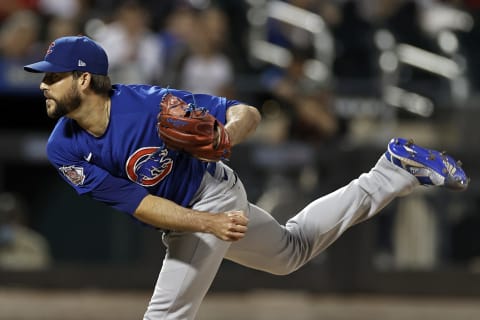
Bailey Horn looks like a lottery ticket the Cubs hit on in Ryan Tepera trade
Though there’s always a surplus of right-handed bullpen arms available at the deadline, you’d be forgiven for feeling a tad underwhelmed by the Ryan Tepera return when it originally happened. Bailey Horn, the White Sox fifth-round pick in the 2020 MLB Draft, was the sole prospect that came back to the Cubs, and he had struggled mightily in his lone season of minor league baseball.
Tepera became a vital part of the White Sox bullpen, pitching to the tune of a 2.50 ERA in 22 appearances and helping lead the White Sox to the postseason, where he promptly fed the Astros bulletin board material before departing in free agency. Meanwhile, Horn, like many other pitchers in the Cubs system this year, has broken out in a massive way in 2022.
Being used exclusivley as a two-inning reliever after a late start to the year, Horn pitched ten innings in High-A South Bend, striking out 16 and allowing no runs before his quick promotion to Tennessee. The only somewhat concerning stat was his five walks, but overall it has been much more good than bad with Horn.
Whether his future is as a reliever or a starter, the needle is pointing up for Bailey Horn
- Original Grade: C
- New Grade: B+
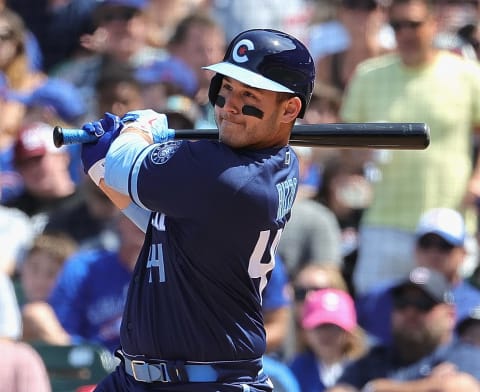
Cubs have potential in the return coming over in the Anthony Rizzo trade
Anthony Rizzo was the heart and soul of the golden era of Cubs baseball, and his departure was a gut punch for the fanbase. The Cubs traded Rizzo to the Bronx in exchange for Alexander Vizcaino, a 25-year-old pitcher with a 60-grade fastball and changeup to go along with a solid slider, and 19-year-old slugging outfielder Kevin Alcantara.
Rizzo was the only Cub traded that wound up staying with the team he was dealt to, signing a two-year extension that fell well short of what he could’ve had in Chicago. Rizzo has been the most productive member of the core traded thus far, anchoring down first base for a dominant Yankees squad. As for the Cubs, it hasn’t been all smooth-sailing so far but both Alcantara and Vizacaino have flashed plenty of potential.
Vizcaino, the Cubs’ 11th-best prospect on Fangraphs, made six appearances in High-A with the Cubs in 2021, and flashed the strikeout potential he holds, sporting a 12.51 K/9 in 13 2/3 innings. Vizcaino still needs work on his command, and has been MIA thus far in 2022, but the pitches are too good to ignore. As for Alcantara, he was moved to Class-A after a dominant rookie league performance in 2021 (OPS above 1.000 in 107 PAs).
Alcantara has been up and down in Myrtle Beach, which is to be expected for a 19-year-old, but he’s held his own with a .767 OPS through 32 games and has flashed the serious power potential he holds. Alcantara will be a bit more of a long-term project, but the early results are encouraging.
Alcantara has certainly established himself as the more intriguing piece in this trade thus far, but each player in this trade has the potential to find their way to Chicago in the future.
- Original Grade: A+
- New Grade: B+
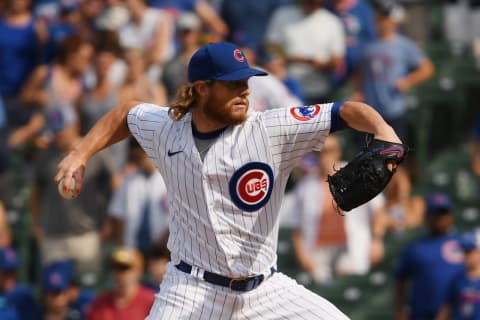
Craig Kimbrel trade hasn’t worked out – especially for the White Sox
At the time, this trade made sense for everyone. The White Sox were getting an elite bullpen arm to pair with Liam Hendriks, and the Cubs were getting five years of control of a once top-15 prospect with unbelievable contact skills and a controllable reliever. Fast forward a year later, and it hasn’t worked for anyone involved.
Kimbrel struggled immensely with the change in role and had an ERA north of 5.00 with the White Sox and was traded to the Dodgers this past offseason for AJ Pollock. Meanwhile, Madrigal’s bat-to-ball skills evaporated, netting an OPS below .500 before he was placed on the IL. Heuer had some encouraging early results while working on the fly on his pitches, but he suffered a UCL tear that will keep him out until midway through 2023, at a minimum.
Simply put, this trade has been a mess, especially considering Madrigal was thought to be a fixture going forward. He is who he is, a contact hitter that’ll be lucky to hit five home runs in a season, but can be useful if he’s able to bat .300 and get on base at a .350 clip like he did with the White Sox. The Cubs control Madrigal for another five years so there’s still time for things to change, but the version the Cubs have seen so far has been nearly unplayable.
It’s impossible to truly say the Cubs lost this trade given they got so much club control for just half a season of what was a bad reliever, but the Cubs haven’t made out like bandits yet either.
- Original Grade: B-
- New Grade: C
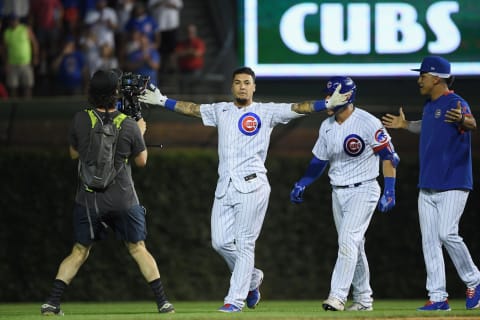
Cubs have a star-in-the-making from the Javier Baez trade last summer
Though this trade looked good for the Cubs at the time, almost a year later it looks downright silly. The Mets were desperately looking to fill the void left by Francisco Lindor’s injury, and Hoyer took full advantage, netting 2020 first-rounder Pete Crow-Armstrong for what wound up being 47 tumultuous games of Javier Baez, and a depth starter in Trevor Williams.
Crow-Armstrong entered 2022 with many questions. How will he respond to his injury? Will he answer questions about his bat? Will he generate any power? The young outfielder has put any doubts to rest with his start to 2022. A Gold Glove-caliber defender, Crow-Armstrong made adjustments to his swing and has put on a clinic at Myrtle Beach.
He has flashed just about everything you could hope for this season. Speed and baserunning? He’s stolen 12 bags in 35 games. Plate discipline? He’s put up 21 walks to 32 strikeouts in 170 plate appearances. Power? He’s flashed the ability to potentially sport at least average power, which was the biggest weakness in his game. All of this, paired with his premier defensive ablility has seem him surge into MLB Pipeline’s Top 100 prospects list.
There should be little doubt that the Cubs have a potentially special player on their hands. Crow-Armstrong is just 20 years old and has flashed all sorts of tools so far.
- Original Grade: A-
- New Grade: A+
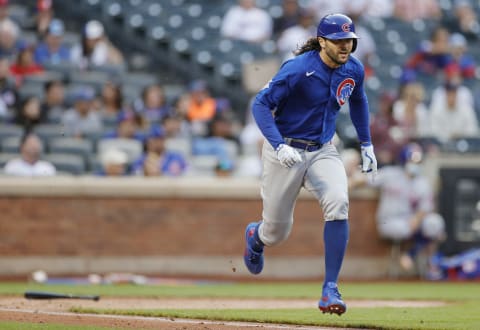
Don’t sleep on what the Cubs got in the Jake Marisnick trade, either
Perhaps the strangest trade of the deadline was the Padres’ decision to part with Anderson Espinoza in exchange for Jake Marisnick. Marisnick is a solid fourth outfielder, but San Diego’s motive behind dealing a pitcher with nasty swing-and-miss stuff in exchange for someone that had just a .472 OPS in 54 plate appearances for them looks even stranger.
As for Espinoza, he’s still flashing the high strikeout numbers in Tennessee. Espinoza currently sits with an 11.5 K/9 and has cut down on his walks lowering his BB/9 to 3.7. He has a high home run rate as of now, but if it drops, Espinoza could be a dangerous weapon for the Cubs in the future.
Whether it be out of the bullpen, or as a starter, Anderson Espinoza has a chance to be a huge bang for the Cubs’ buck.
- Original Grade: A+
- New Grade: A+
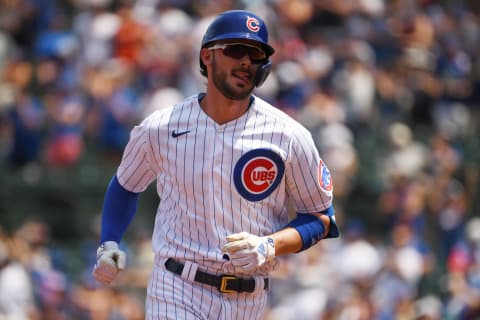
Kris Bryant trade netted the Cubs a pair of exciting young prospects
The last trade the Cubs made was sending Kris Bryant, perhaps the figurehead of the golden era, to San Francisco in exchange for power-hitting outfielder Alex Canario and late-blooming starter Caleb Kilian. Bryant was solid enough in San Francisco, but they ultimately let him walk in free agency where he joined the division rival Colorado Rockies.
Originally it appeared as though Canario would be the main piece, and he has flashed the power that the front office clearly likes. Canario even earned a promotion to Double-A after posting a .944 OPS in South Bend, with an encouraging .360 OBP and .584 SLG. It quickly became apparent however, that Caleb Kilian was potentially the big fish of the trade.
Kilian has perhaps been the systems biggest riser, rivaled only by Crow-Armstrong. Since being acquired, the right-hander hasn’t looked back, with a dominant perfect showing in the AFL championship being the beginning of a meteoric rise. The Cubs started Kilian in Triple-A in 2022 and he’s continued his roll, rocking a minuscule 1.31 ERA to go with 10.5 K/9 and a solid BB/9 of 3.4. If Kilian keeps up his current pace, he’ll be at Wrigley soon enough.
While Bryant was responsible for memories that will last Cubs fans lifetimes, Canario and Kilian could be key parts of the next Cubs team that does the same.
- Original Grade: C-
- New Grade: A
Next. Cubs: Breaking down Justin Steele’s superb month of May. dark
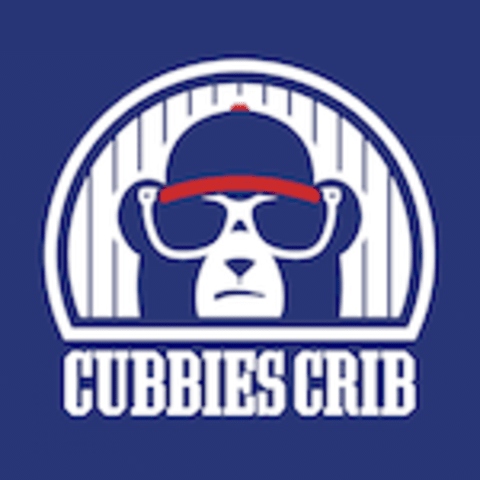
Want your voice heard? Join the Cubbies Crib team!
Though the trade deadline was a stark ending to such a brilliant era of baseball at Wrigley, the early results from the moves have been overwhelmingly positive. There will be another competitive era of Cubs baseball,and hopefully we can look back at this deadline as the beginning of a new era.